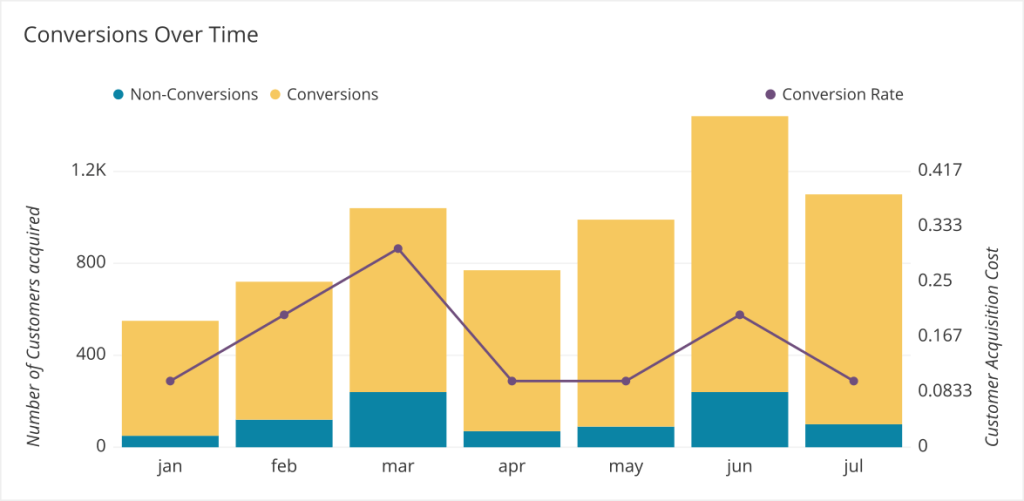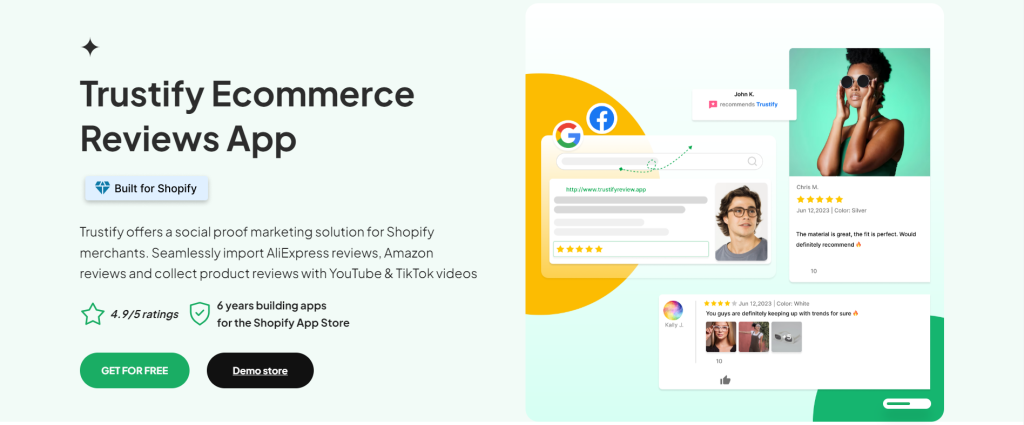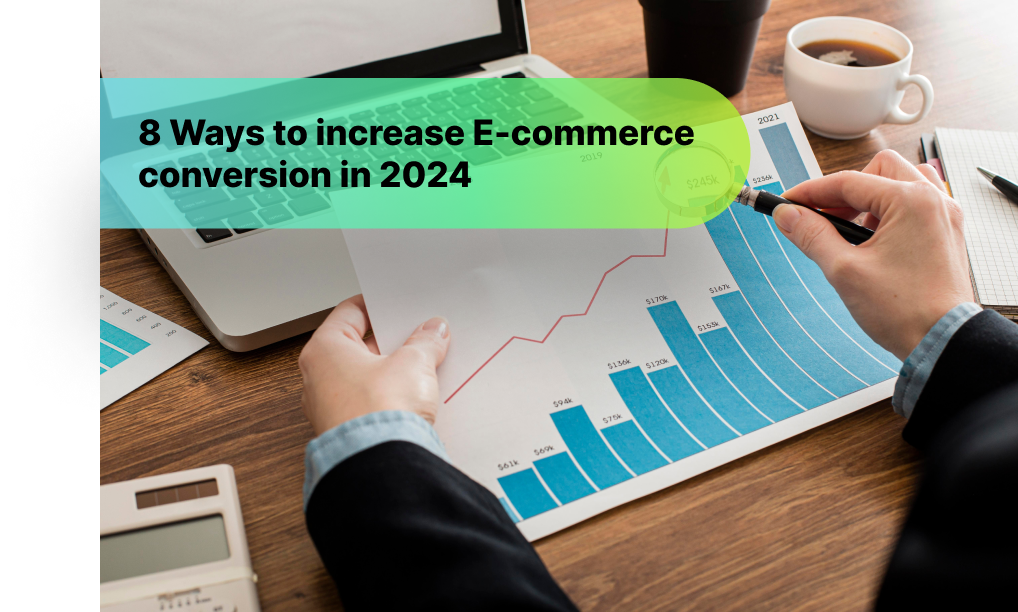In early 2024, when e-commerce increases, customers’ shopping needs suddenly increase, and you need to learn tips & tricks to create high sales. There are various ways to do it and enhancing your website’s conversion rate is one of the various strategies available. Even with the support of Shopify, which benefits from a vast community and various connections, Shopify store owners need help with their eCommerce conversion rates because of the lack of helpful information to improve their conversions.
This post will give you detailed information about e-commerce conversion rate.
What is e-commerce conversion rate?
E-commerce conversion rate is the percentage of visitors to your e-commerce website or landing page that convert or complete a desired action.
It is calculated by dividing the number of completed transactions by the total number of visitors to the website, then multiplying the result by 100 to express it as a percentage.
Mathematically, the formula for E-commerce Conversion Rate is:
Conversion Rate =( Number of Conversions / Number of Website Visitors)×100
What is a good e-commerce conversion rate?
Average ecommerce conversion rates are around 2.5-3%. Reality has shown that a conversion rate of 3.3% or higher is considered good, placing your store in the top 20% among all Shopify stores.
It’s important to note that numerous factors can influence your Shopify conversion rate. Everything from the design of your shop, the products sold, and the effectiveness of your marketing strategies.
Next, we will provide you with a comprehensive guide on methods to enhance the conversion rate of your store.
1. Identify your website’s goal

To know if your conversion rates are improving, you need to track and measure your success. Firstly, you need to determine what actions people take on your website and what counts as a conversion. For instance, you may choose to consider a conversion as either a purchase or the act of subscribing to your newsletter.
Set achievable goals and evaluate your progress realistically. Examine the number of conversions in the previous month, three months, and six months to evaluate historical performance, but don’t hesitate to push your aim. After establishing your goals, consistently review and measure your performance against them using site analytics.
Research has shown that E-commerce conversion rates higher than 5% are considered to be “good” or above the average.
2. Search your website’s data

Concrete data can provide user behavior insights. A customer might say they like the design of your product page, but the data illustrates that a competitor product page drives 15% more conversions, and then you confirm that a competitor page performs better than yours.
The most important data point is your conversion rate. The best way to gain insight into your conversion rate is by analyzing which pages and products have higher conversion rates and identifying areas that may need improvement to enhance the overall user experience. Besides, Utilize Shopify’s sales reports to understand trends in product performance, customer purchasing behavior, and revenue.
Especially, integrate Google Analytics with your Shopify store to gain more comprehensive data and insights. This can provide detailed information about user behavior, traffic sources, and conversion rates.
3. Promote your value proposition

The value proposition of a website is the unique and compelling benefits that visitors can gain from using the website. If your audience is truly interested in your product’s value,
they will come to your website looking for important product information
Conducting A/B Testing can adapt your value proposition based on real-time audience feedback by testing different variations. If you’re running digital advertising campaigns, A/B testing your taglines or ad copy ensures that it helps you find compelling messaging on your website. Moreover, you can use Google Optimize enabling you to test changes across multiple pages of your website that assess the impact of changes on user journeys that span multiple pages.
4. Add social proof with reviews and testimonials

Positive reviews and testimonials from real customers build trust with potential buyers. When visitors see that others have had positive experiences with your products or services, they are more likely to trust your brand. Trustify Reviews App can increase the credibility of your store by outstanding features:
- Import AliExpress reviews with multiple import filters (Import reviews based on rating, Translate reviews into a language, Import with photos).
- Automatically import reviews from a Facebook page.
- Enhance your display with captivating designs and a variety of color options. Enable translation for widget text in multiple languages.
- Efficiently handle a large number of reviews by performing actions such as hiding, publishing, deleting, or pinning feature reviews in bulk.
- Boost organic traffic by structuring review data for SEO.
Learn More: What is Social Proof and How to Apply It in Marketing?
5. Help customers easily find products

Easy navigation contributes to customer satisfaction. When customers can quickly locate what they need, it reduces frustration and creates a positive impression of your business. At that time, they are more inclined to make a purchase. We can be sure that customers can easily find products by adding the search bar and a live chat element.
A search bar provides users with a quick and efficient way to find specific products, information, or content on your website. This contributes to a more positive and convenient user experience.
Besides, live chat can serve as a tool for lead generation. By engaging with users in real-time, you can identify potential leads, address their inquiries, and guide them through the sales funnel.
6. Provide an incentive

Many shoppers actively seek discounts or additional incentives when making a purchase. Over 60% of shoppers. are hesitant to purchase from a retailer that doesn’t provide free shipping. Although free shipping is not always available, consider providing it for a customer’s initial purchase, upon reaching a specific cart value, or within a limited time.
7. Simplify checkout form
A shorter checkout form reduces the number of steps and fields users need to complete, minimizing friction in the purchasing process. This streamlined experience is more user-friendly and encourages users to proceed with the transaction. Ensure simplicity and brevity in your checkout form by gathering only essential information, such as the shopper’s name, address, and payment details. Enhance the user experience by incorporating a progress bar, keeping shoppers informed about their position in the checkout process. Explore one-click checkout options, using platforms like Shop Pay to automatically store and apply users’ data for seamless purchases
If your goal is to increase the conversion of new customers, you can provide a discount code that allows them to receive a monetary reduction on their purchase.

Clothes brand H&M offers new shoppers 10% off your entire purchase.
8. Have a trustworthy returns policy.
A transparent and customer-friendly returns policy builds trust. When customers know they can easily return a product if needed, they feel more confident in purchasing your business. This confidence can lead to increased sales and repeat business, which can ultimately improve conversion rates.
Brand Zappos allows customers to get a refund and return their products if they’re not happy.
WRAP UP
Small business owners who want to boost online sales need to gather information. They should keep an eye on important numbers like how much each customer spends over time, how many customers keep coming back, and how much it costs to get a new customer. This helps them understand what their customers do and figure out what’s going well and what’s not.
But it’s not just about those basic sales numbers. They should also look at data about how they handle things like shipping and keeping products in stock, like how much it costs to store products, how many products get sent back, and how quickly products are sold. With this info, they can try things like using dropshipping or being more efficient with their stock to save money and make more profit, even if they don’t get more customers buying stuff right away.
